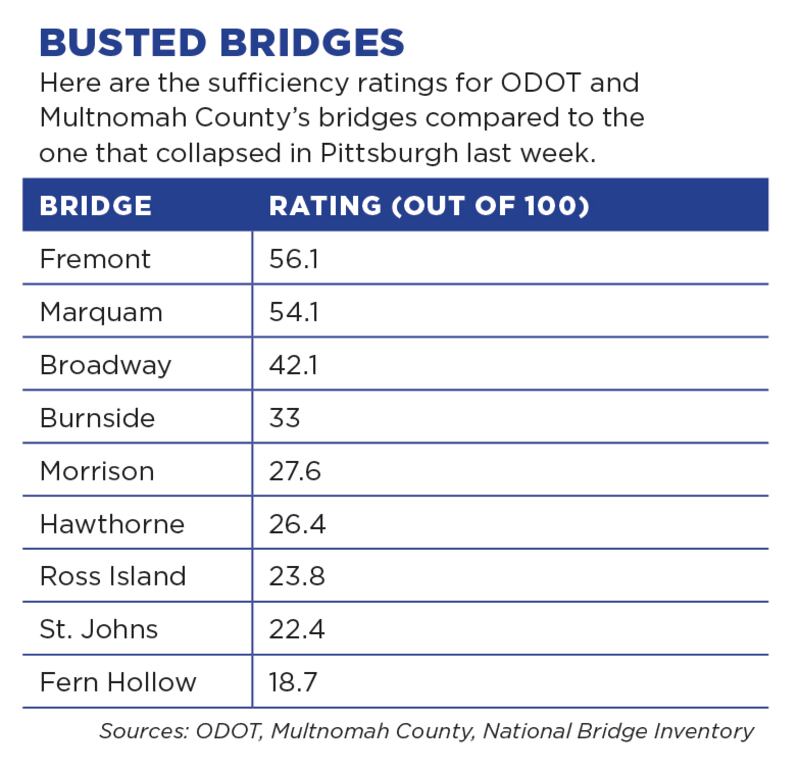The collapse last week of the Fern Hollow Bridge in Pittsburgh raises an obvious question: Could it happen here?
Pittsburgh, like every old American city, including Portland, is struggling to maintain and replace aging infrastructure. But the Fern Hollow Bridge—completed in 1970—wasn’t that old and in fact was newer than many of the bridges upon which Portlanders depend.
It was, however, according to the Associated Press, rated “poor” on its most recent inspection. (Less than 2% of the 2,766 bridges the Oregon Department of Transportation maintains are rated poor. In Pennsylvania, that number is nearly 14%. The U.S. average is 7%.)
Responsibility for Portland’s bridges is split between the Oregon Department of Transportation and Multnomah County.
First, the state bridges. Each of the four ODOT bridges in Portland earns the same rating—“fair”—on the ODOT’s 2021 bridge report. The Fremont (completed in 1973), Marquam (1966), Ross Island (1926) and St. Johns (1931) bridges are also rated “vulnerable” to seismic activity. (The Steel Bridge, built in 1912, is privately owned by the Union Pacific Railroad.)
Even more detailed information is available about the county bridges. The good news: Two of them, Sauvie Island (completed in 2008) and Sellwood (2016), are new and structurally sound. Bad news: The other four bridges—the Broadway (1912), Burnside (1926), Hawthorne (1910) and Morrison (1958)—are all older than Pittsburgh’s Fern Hollow Bridge.

County spokesman Mike Pullen says the county hires an independent inspector to survey each of those bridges every two years and does its own inspections as frequently as quarterly when there are safety concerns.
“What happened in Pittsburgh is really unlikely here because of our regular inspection,” Pullen says. “If a bridge falls here, it’s likely to be because of a major seismic event.” (Prior to its replacement, the Sellwood Bridge had a sufficiency rating of 2, among the nation’s lowest, but remained in service because constant inspections assured it was safe.)
The county in 2016 began working toward the replacement of the Burnside Bridge with a seismically resilient “lifeline” bridge that would keep the city connected in the event of a massive earthquake. Officials hope to start construction on the $800 million project in 2025.
Pullen says four of the county’s venerable bridges meet the threshold—below 50 on a “sufficiency rating” scale of 100—that qualifies them for federal replacement funding, although there’s a long waiting list for that money.

